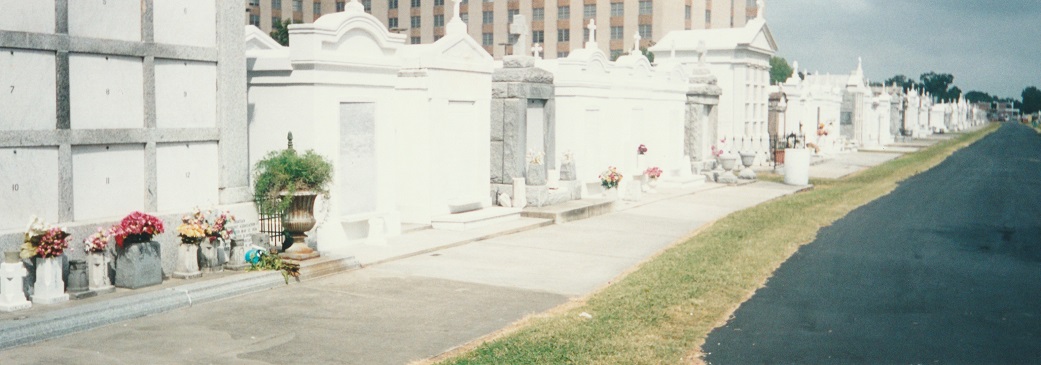
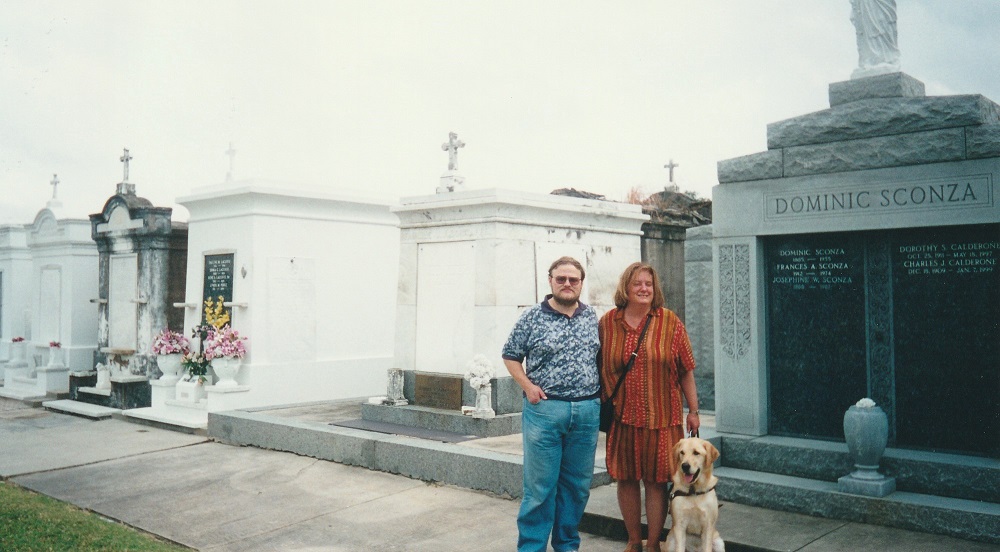
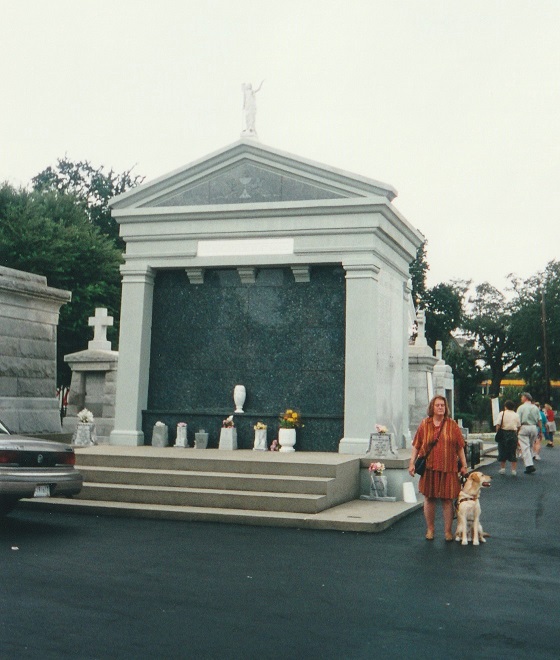
We started the day by taking a Gray Line tour of the city, to sort of orient ourselves. The bus took us all over the city, and served as a good high-level overview.
The most interesting thing, to me, was the above-ground cemeteries, or "cities of the dead." New Orleans is, essentially, a city built on a swamp. Parts of it are actually below sea level (more on this in a moment). This means that it is not only impractical, but downright impossible, to bury your dead in the ground. So all N.O. cemeteries consist of above-ground crypts.
The tour bus stopped at one of these cemeteries, and we got out and walked among the crypts:



On the way back from the tour, I took this picture of Terry standing by the riverfront:
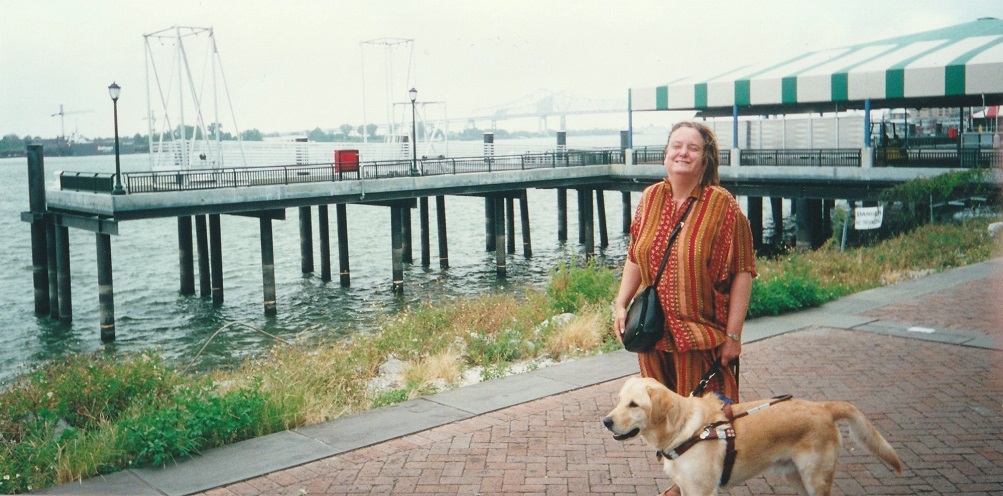
We then went to Cafe Maspero for lunch:
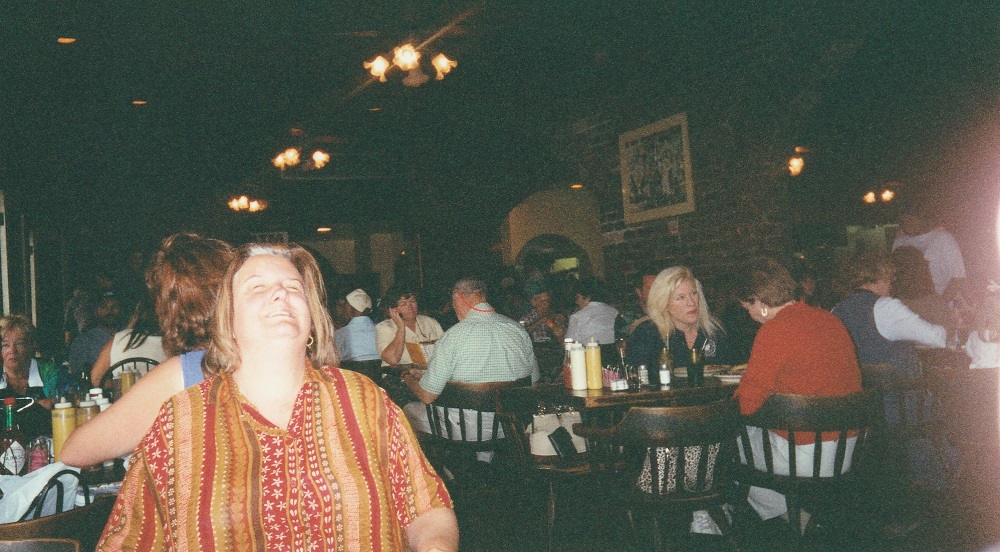
...where we shared a muffaletta. This is a type of sandwich popular in New Orleans. It's essentially a sub sandwich on a round roll (no sourdough in sight, to our relief), with a dressing made of chopped olives.
This would be as good a place as any for a short geography lesson. The French Quarter, or Vieux Carre, is the oldest section of the city, hugging a bend in the river. In this section, the streets are narrow, and the buildings are old. Of course, there's much more to the city now, but the French Quarter is the romantic, picturesque part. We spent much of our time there.
Since the city has been, at various times, under French, Spanish and American control, all of the streets in the French Quarter have three names, in French, Spanish and English. For example: St. Philip St., Rue St. Phillipe, Calle San Felipe.
In the center of the Quarter is Jackson Square, also known as Place D'Armes, or Plaza de Armas. This was originally an arms depot (hence the French and Spanish names), and is now a city square, highlighted by a statue of Genl. Andrew Jackson (hence the English name).
On the north side of the city is Lake Pontchartrain. This is a large lake, about 30 miles north to south, and even longer east to west. And according to the tour guide, the average depth is 12 feet. I commented to Terry that you could damn near wade across it.
As I said, much of the city is below sea level. The water is controlled by levees, and a series of canals, both above and under the ground. The tour guide pointed out one place where the bus went over a canal, and right next to the canal was a levee, and right next to the levee was a house - and the water level in the canal was about even with the second floor of the house!
Here's a map of New Orleans:
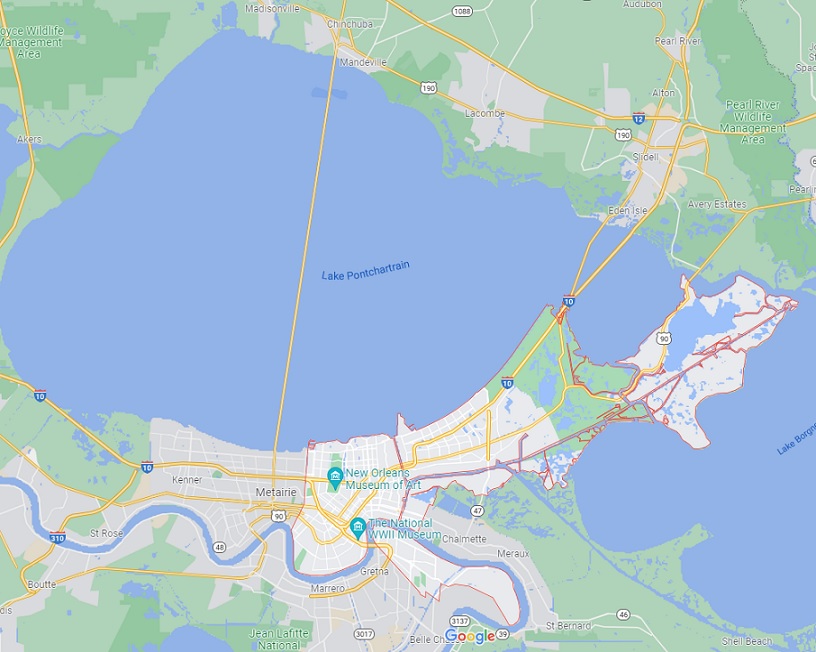
...and a close up map of the French Quarter:
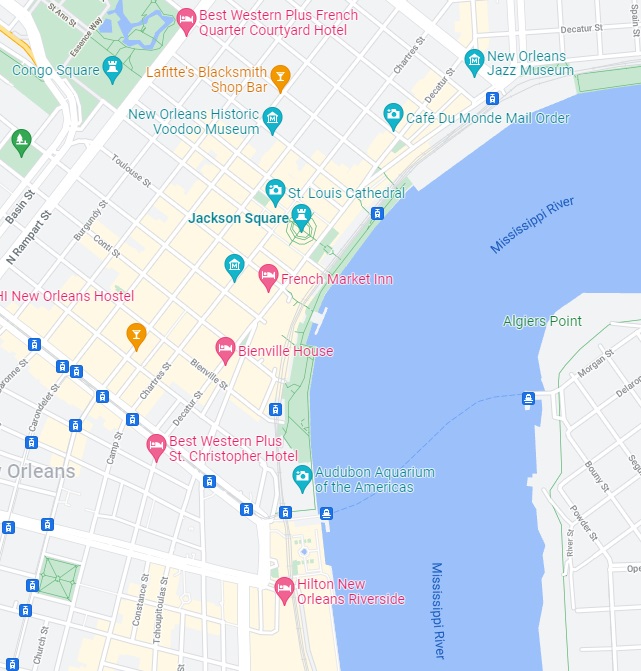
After lunch, we walked to Jackson Square. This is the entrance:
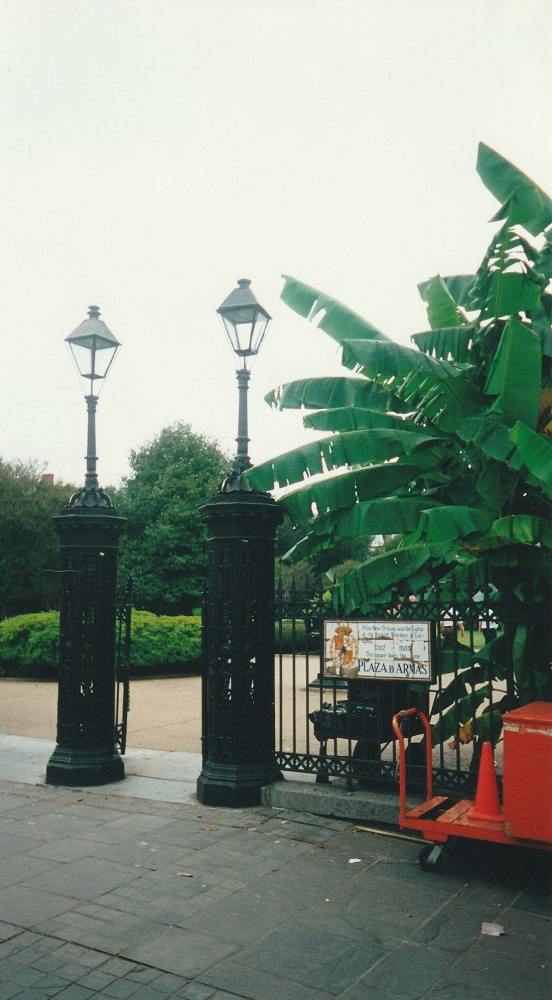
...facing Decatur St., one of the Quarter's main streets (it runs along the riverfront). The plaque visible on the fence tells what the Spanish name used to be; a similar plaque can be seen on every street corner (the French street names are on the street signs, in small letters above the English names).
Looking through the front gate:

...you can see the statue, and St. Louis Cathedral on the north side of the square (said to the be the oldest cathedral in continuous use in the country).
After lunch that day, we took a carriage tour of the French Quarter (the Gray Line bus tour doesn't go through the Quarter, because the busses are too wide to fit through the streets). The way this works, if you want the carriage and driver all to yourself, it's $50. But if you wait until he's got six people in the carriage, it's $10 per person. We waited.
Here's a picture of our driver, Ken, and the mule (not horse) pulling the carriage. The guy spent more time looking back over his shoulder at us, than at the road ahead. I guess the horse knows the way to carry the sleigh... er, the mule knows the way to carry the carriage.
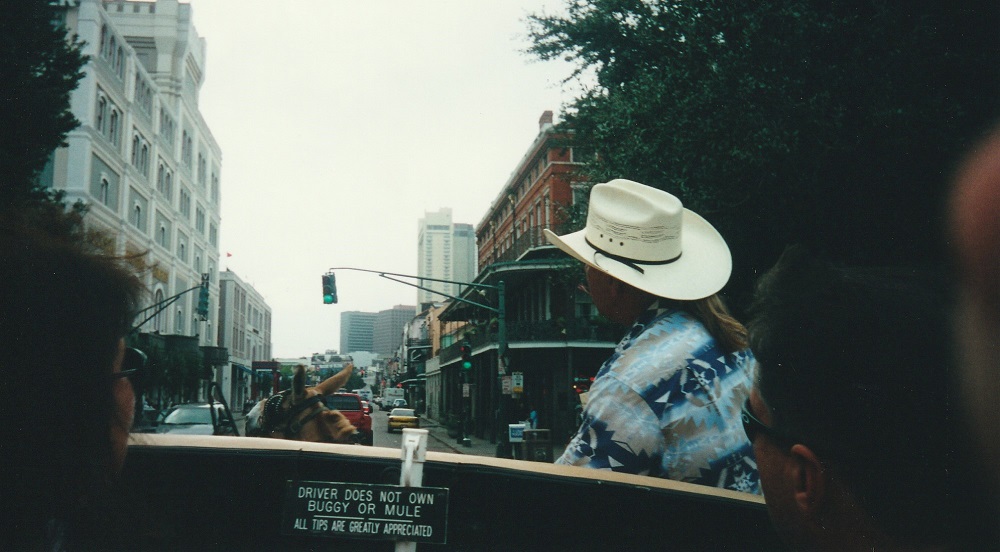
The tour stopped at Jean LaFitte's bar:
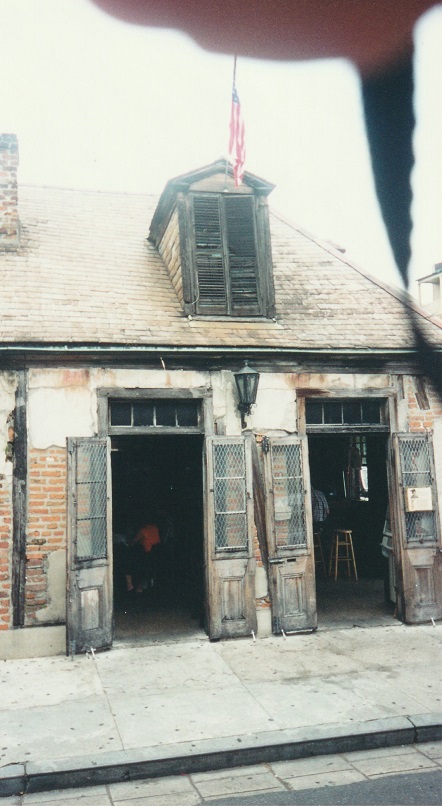
...said to the be the oldest bar in continuous use in the country. From the looks of it, I have no reason to doubt the claim. It's also said to be where the 18th-century pirate Jean LaFitte maintained his blacksmith shop, and also kept his warehouse of smuggled goods. All such claims, of course, must be taken with one or more grains of salt. It's a picturesque building, though. At this point, I just took a picture - more about this place a little later.
After the tour, we wandered a bit. Jackson Square is bordered on the south by Decatur St., but the other three sides are bordered by pedestrian walkways, closed to traffic. The east and west sides are crowded with tarot card readers, palm readers, aura readers, and the like. The north side seems to be where street musicians hang out.
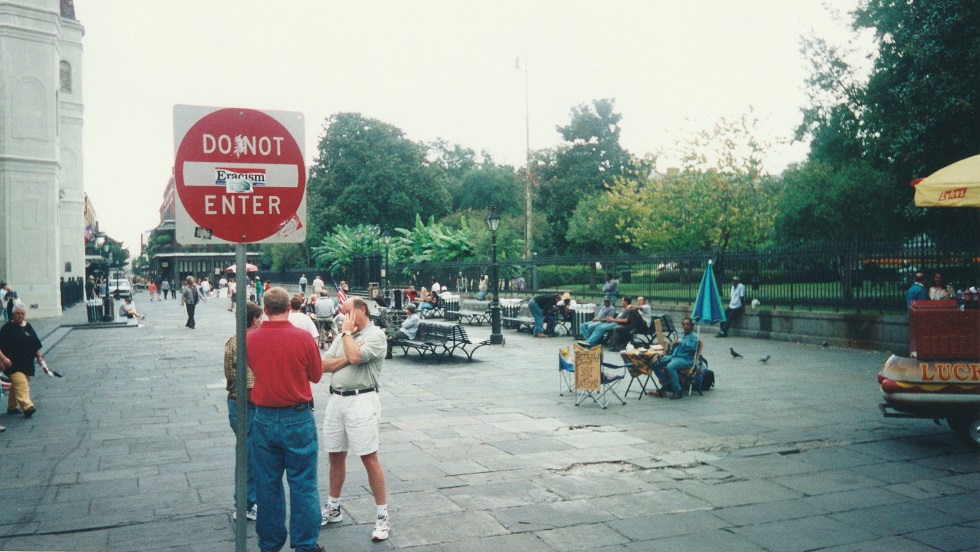
Actually, there are street musicians all over the place, and even the ones playing inside can be clearly heard from the street, because all the windows are always open. And the windows are Creole-style windows that come almost all the way down to the ground. The French Quarter is, therefore, a very noisy place - in a good way. I remarked to Terry that there must be more music per square inch in this city than almost anywhere else in the world.
Anyway, back to Jackson Square - at the northwest corner, there was a pickup jazz band playing. That same band was there every day, the entire time we were there. And the cast of characters constantly changed, although a few players were always there. The focus of the group seemed to be a young black man who played trombone and sang - you can see him in this picture (black shirt, white pants):
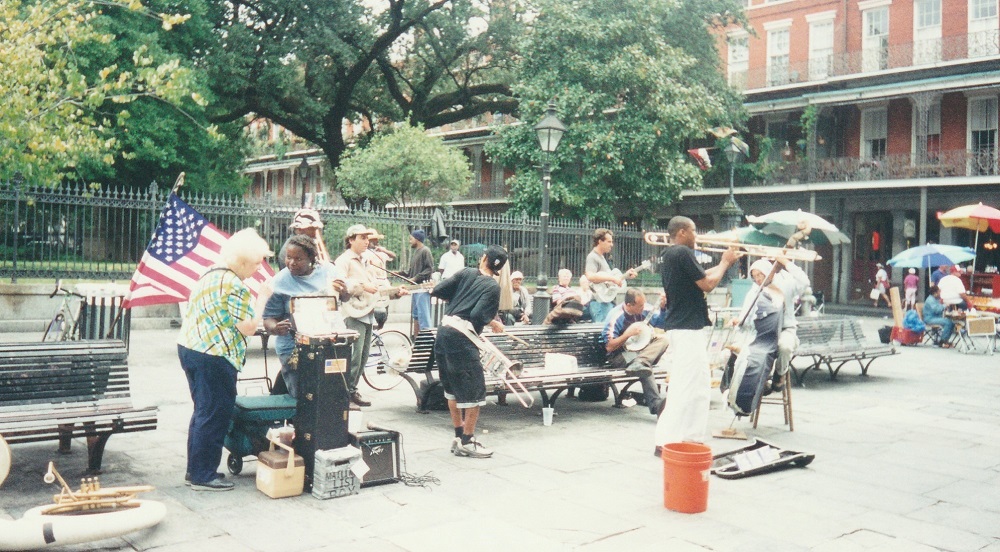
On this occasion, he was accompanied by a clarinet, a valve trombone, two steel guitars and banjo, an upright bass, a drum set, and a military snare drum. I was particularly amused by the snare drummer (that's him in the baggy black shorts, bending over). He would "punctuate" the singer's words with commentary. My favorite was in "St. James' Infirmary:"
Let her go (Let her go!)I later learned that the trombone player / singer was Glen David Andrews, and we bought one of his CD's. Unfortunately, it wasn't very good. In fact, to our dismay, it was surprisingly bad.
Let her go (Ah, let her go!)
God bless her (If the devil don't ketch her!)
Next, we went to the 1850 House. The Louisiana State Museum is spread out over several buildings around the Quarter, and the 1850 House, on the east side of the Square, is one of them. It's furnished with period furniture (guess which period), to show what a typical house of the time would have looked like. Then for dinner, we went to The Gumbo Shop, where we had our first (but not our last) jambalaya of the trip.
After dinner, we went to a storefront on St. Peter St. (Rue St. Pierre, Calle San Pedro... OK, enough already), where we took a Haunted History tour:
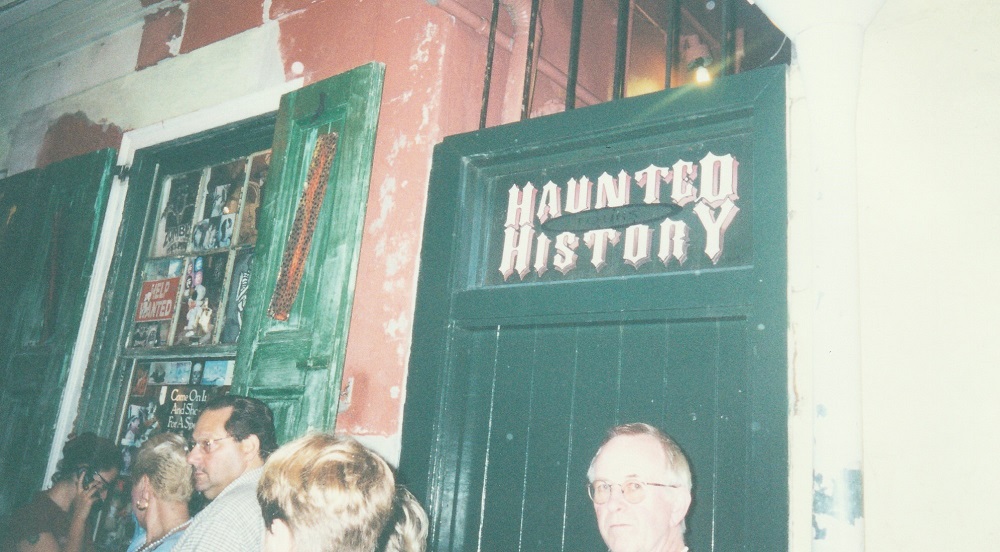
There are several such tour operators in the city, and this one (which was recommended by Todd) conducts several tours, of which we took two. This night, it was the Voodoo Tour. Our tour guide was a young man (a self-proclaimed "victim of a liberal arts degree") named Eliot:
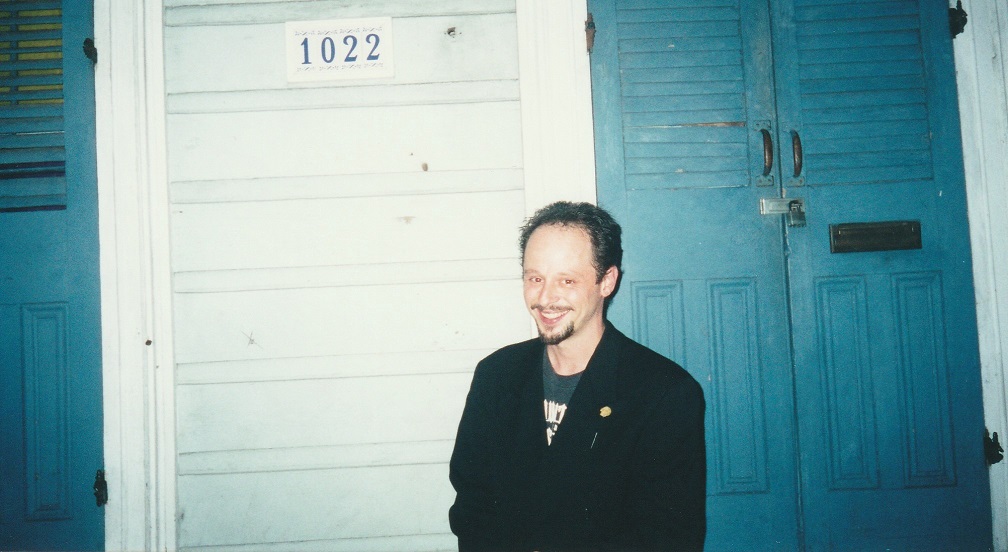
He kept up a running patter of bad jokes, of course, but was also knowledgeable and informative. The tour took us to the house of Marie Laveau (well, not her house, actually, but a newer house built on the site):
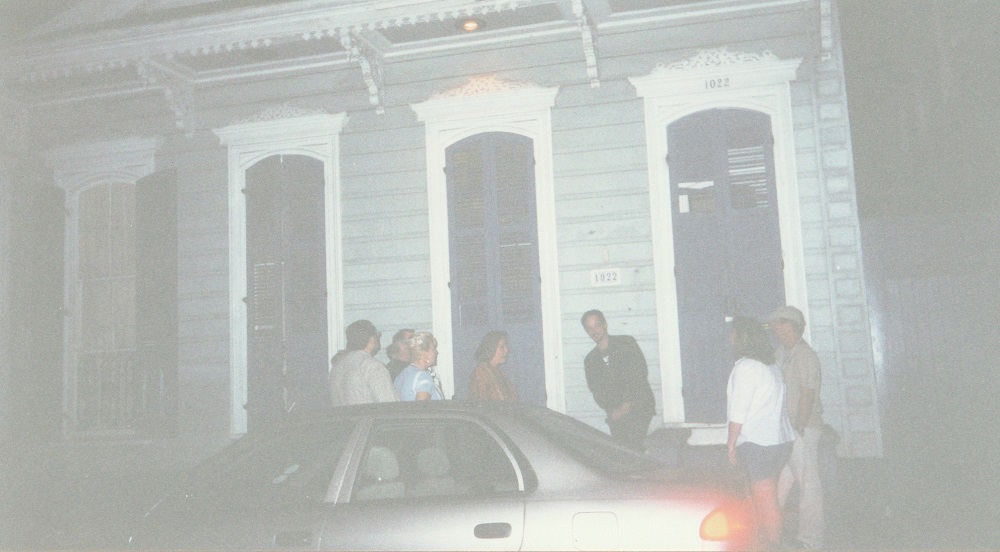
...and to various voodoo and occult shops, and finally to a witchcraft museum.
After the tour, we went back to Jean LaFitte's bar. At night, the place is very dark and spooky inside. But there was a piano man who kept things lively. We each had a Hurricane, a drink for which N.O. is famous (or infamous, as the case may be). In the first place, it comes in a LARGE glass. It's made of assorted fruit juices, with two kinds of rum, one of which is 151 proof. I only drank half of mine; Terry finished hers, and then finished mine. And then she had another one. And then we went rolling home...A long day, indeed.